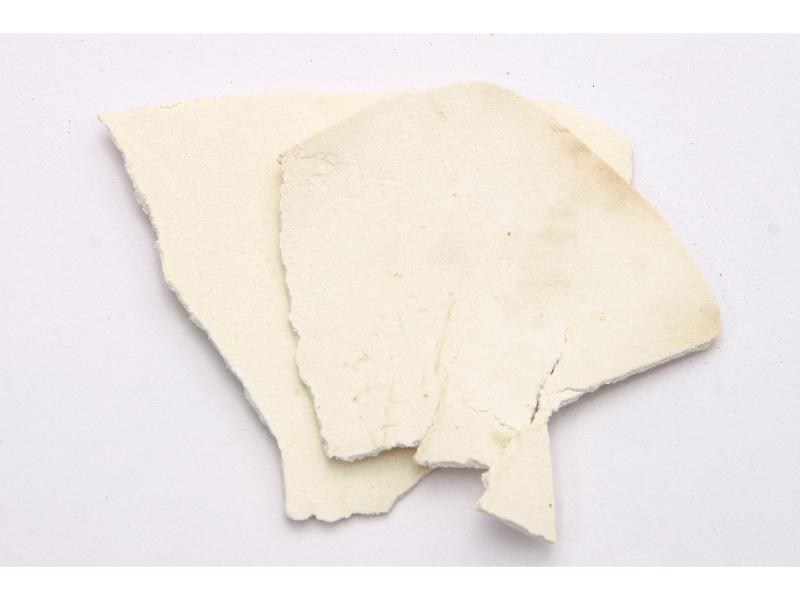Search in medicinals
Poria
Poria
茯苓 〔茯苓〕 fú líng

Alternate English names: hoelen tuckahoe
Alternate Chinese names: 茯菟 fú tù; 伏兔 fú tù; 松腴 sōng yú; 茯兔 fú tù; 松薯 sōng shǔ; 松木薯 sōng mù shǔ; 松苓 sōng líng; 云苓 yún líng; 云茯苓 yún fú líng; 伏灵 fú líng
Kingdom: Plant
Origin in PRC Pharmacopoeia: Poria cocos (Schw.) Wolf. [= Pachyma hoelen Rumph]. (PRC Pharmacopoeia)
Origin in unofficial sources: Poria cocos (Schw.) Wolf [= Pachyma hoelen Rumph]
Use: Medicinal
Category: Water-disinhibiting dampness-percolating agents / Water-disinhibiting swelling-dispersing agents
Properties: Sweet, bland; balanced.
Channel entry: Heart, spleen, and kidney channels.
Actions and indications:
- Disinhibits water and percolates dampness: All types of water swelling.
- Fortifies the spleen: Patterns of spleen vacuity.
- Quiets the spirit: Heart palpitations and insomnia.
Dosage and method: Oral: 10–15g in decoctions. It can be stir-fried whenever additional warmth is required.
Warnings: Contraindicated for seminal efflux and qì vacuity fall.
Notes: Fú líng is a fungus that grows around the roots of pine trees. The part closest to the root (often sold with the root still within it) is known as fú shén (Poria cum Pini Radice), root poria (literally poria spirit
in Chinese). The outer surface is known as fú líng pí (Poriae Cutis), poria skin,
and the pinkish section below the skin is referred to as chì fú líng (Poria Rubra), red poria.
Product description: The sclerotium is spherical, spheroid, or irregular shape. It varies in size, weighing 3–5 kg. The exterior surface is a blackish brown. The outer skin is thin, rough, wrinkled, and often has earth stuck to it. It is heavy and breaks open with difficulty to leave a rough fracture that is granular or farinaceous in texture. This product usually comes in the form of thin slices, with the skin removed (this being used separately). White poria (bái fú líng) is white on the cut surface, while red poria (chì fú líng) is peach-colored. Root poria (fú shén) comes in squared slices, with the yellow root of the pine that grows through it clearly visible. Cinnabar root poria (zhū fú shén) is bright vermillion.
Quality: Loose, brittle sclerotia with flesh that is yellow at the margins are best.
Production area: Héběi, Hénán, ānhuī, Zhèjiāng, Fújiàn, Guǎngdōng, Guǎngxī, Húnán, Húběi, Sìchuān, Guìzhōu, Yúnnán, Shānxī), Korea, and Japan.
Etymology: The name fú líng 茯苓 was originally written as fú líng 伏灵, meaning low-lying spirit,
i.e., a concentration of the pine's spirit underground.